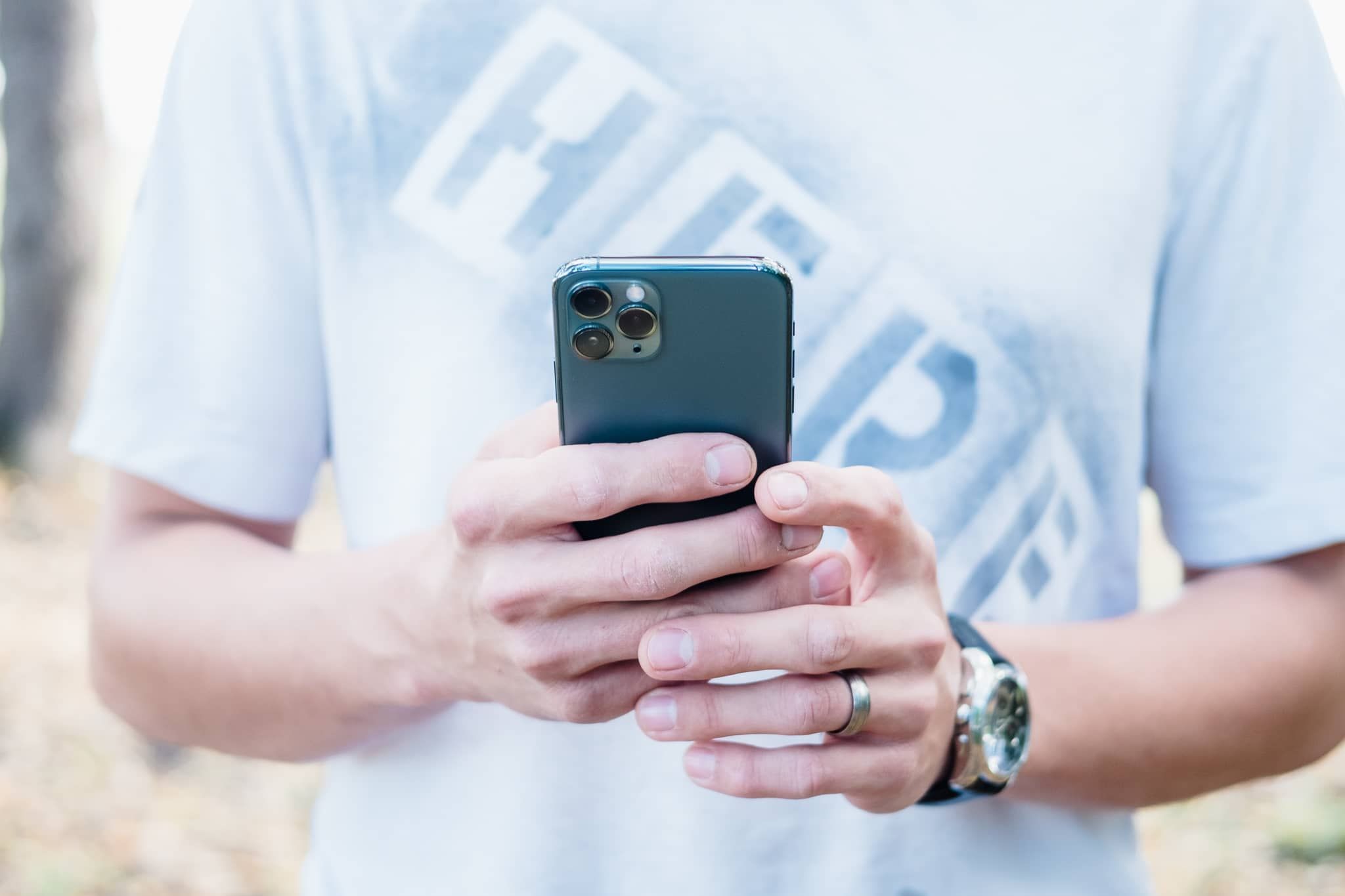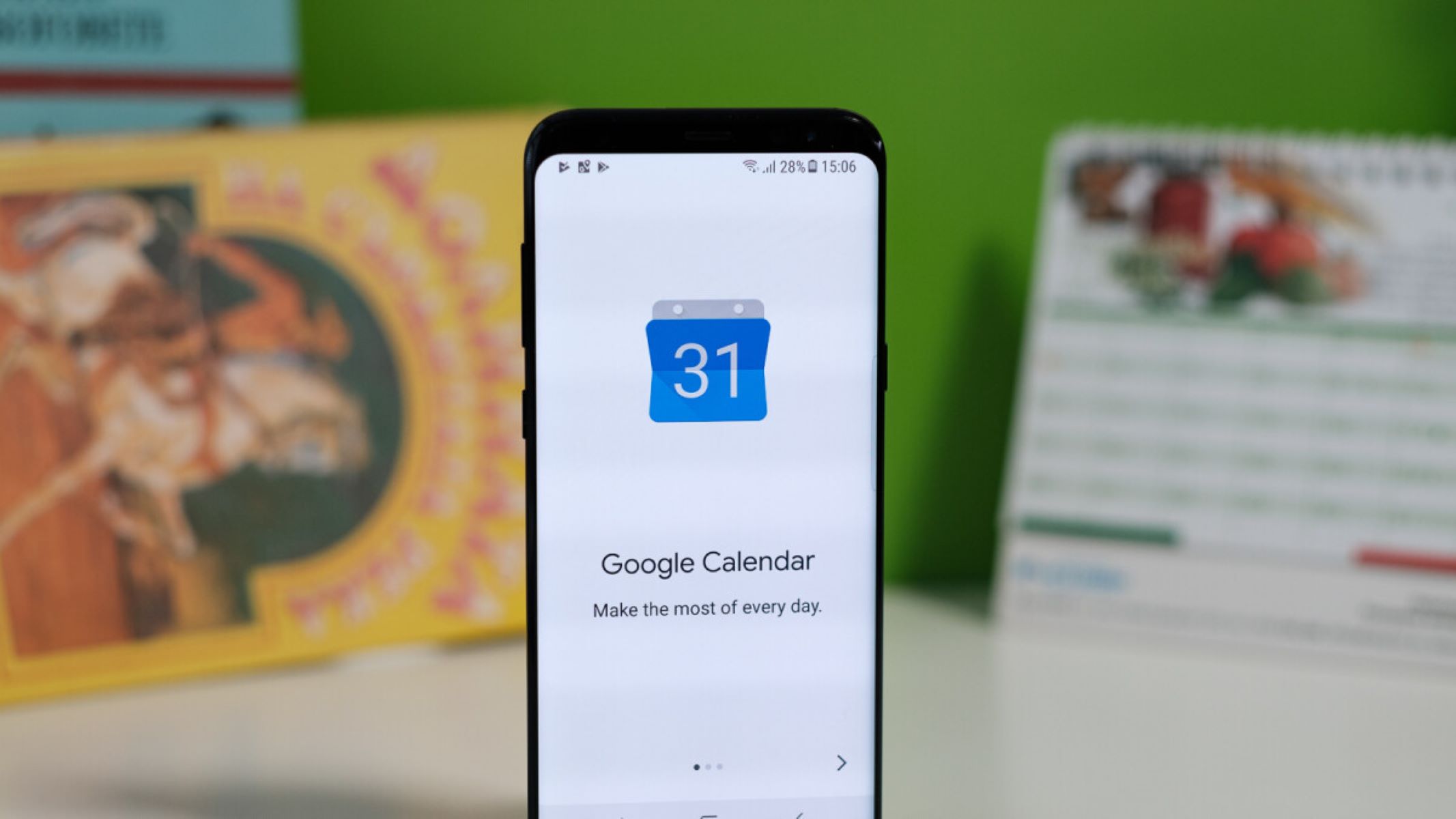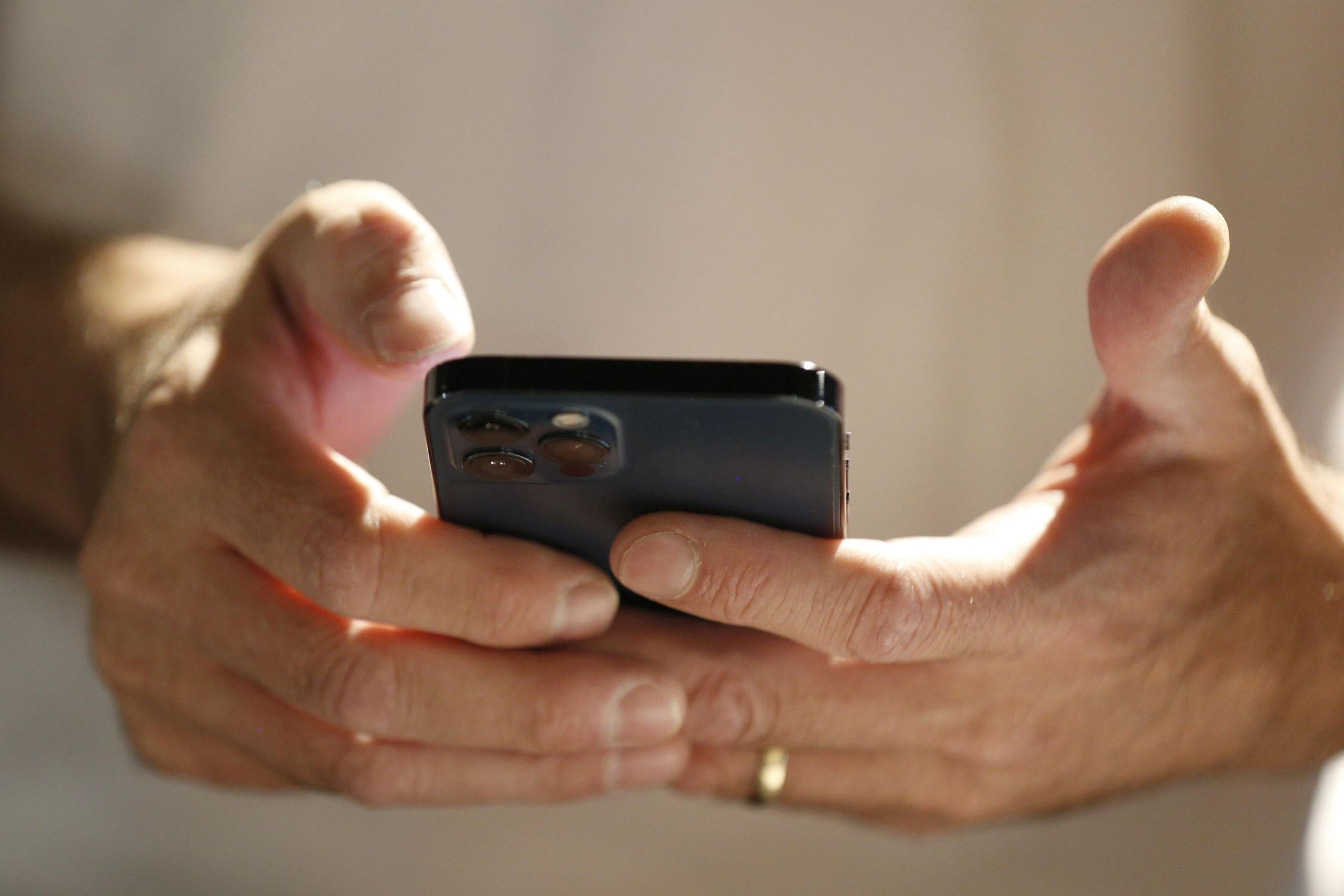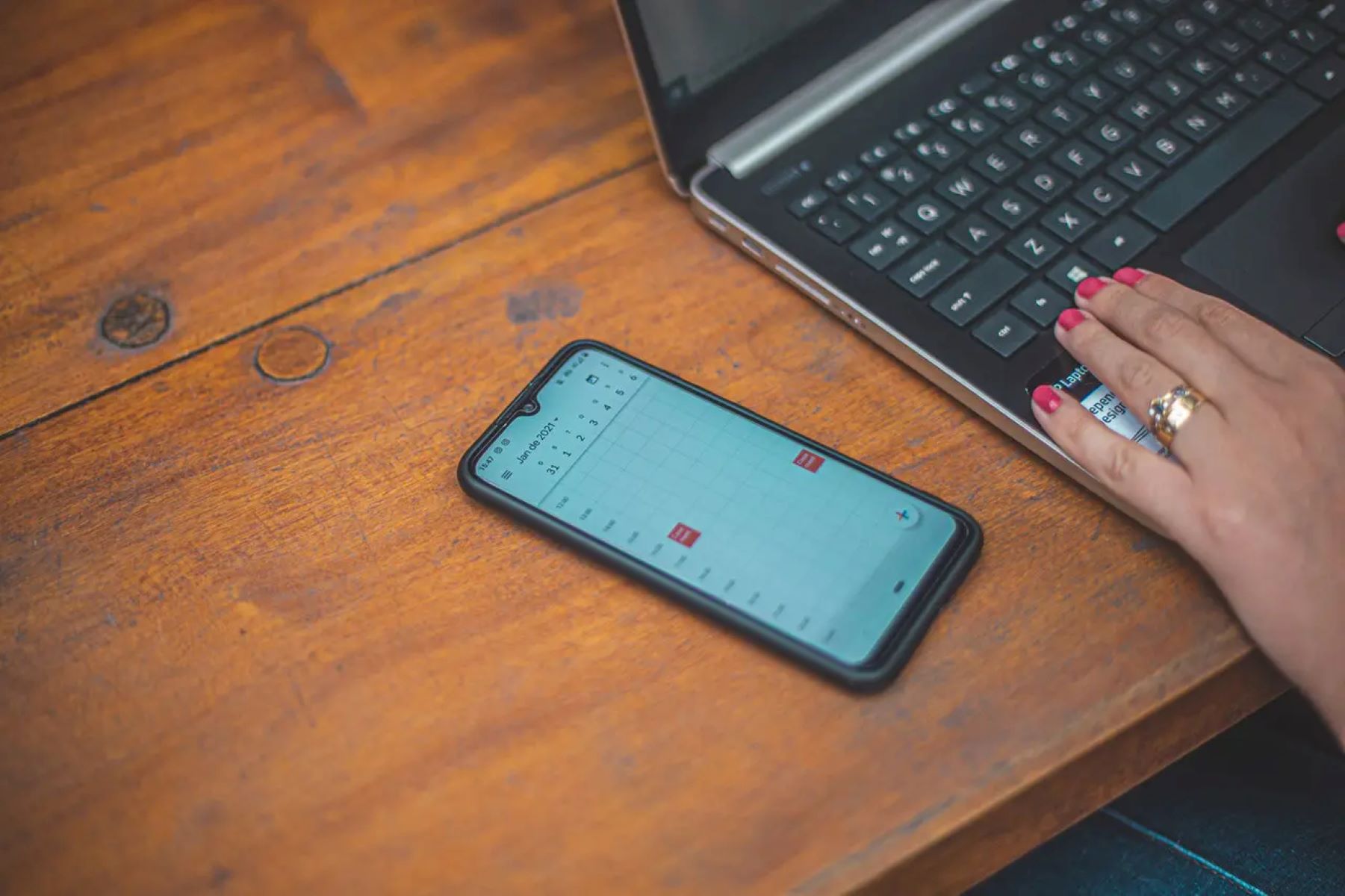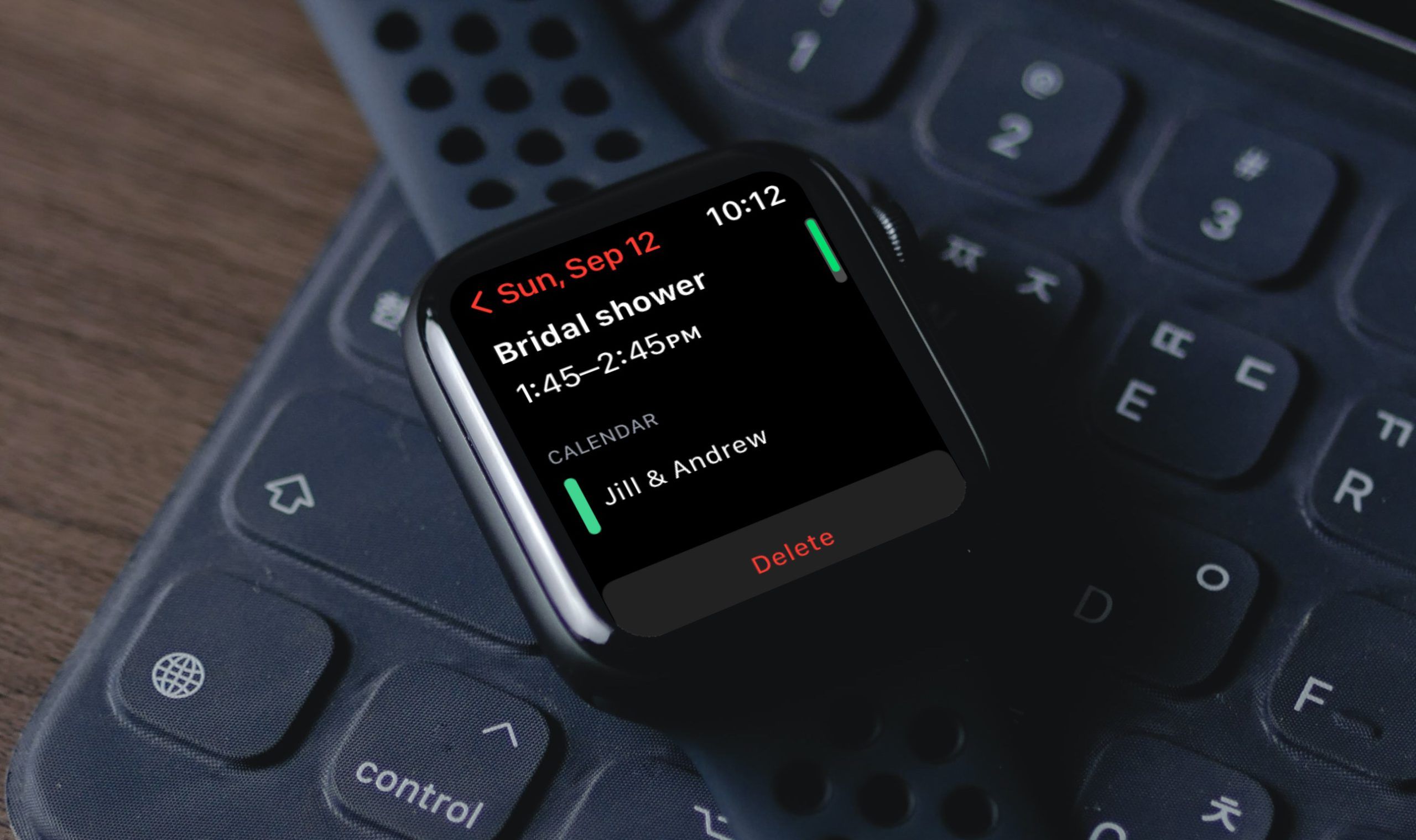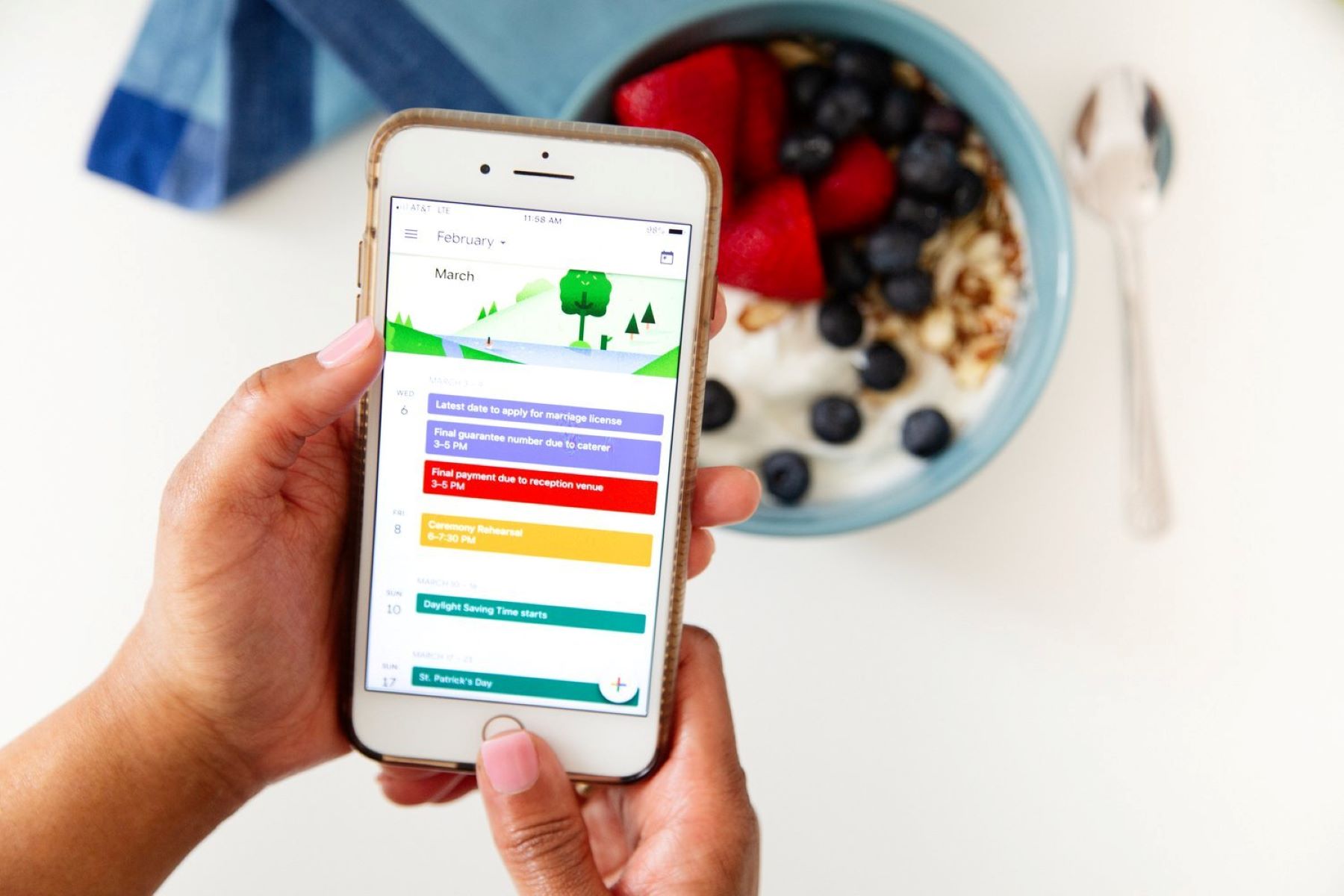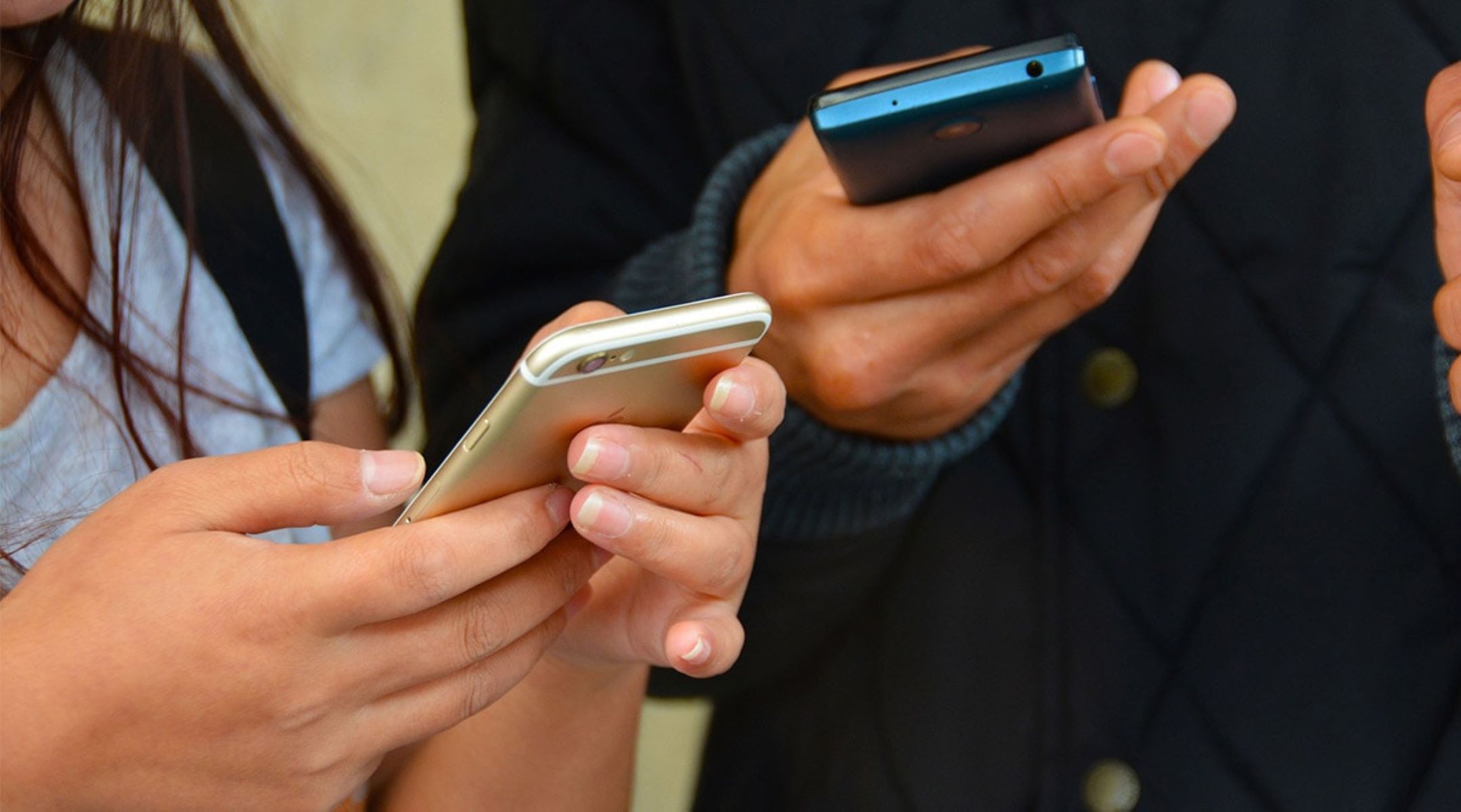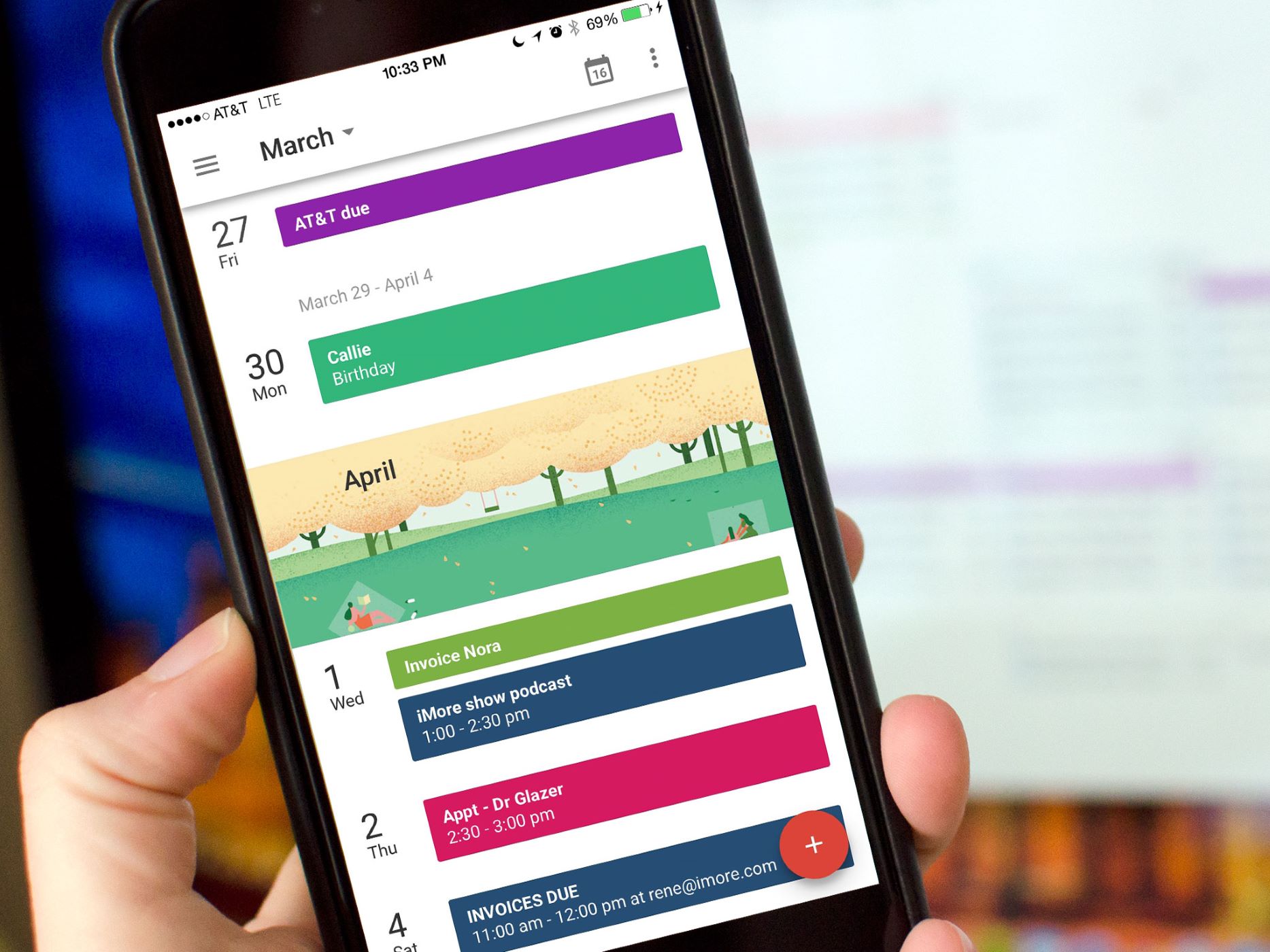Introduction
Google Calendar is a popular and convenient tool for managing your schedule, appointments, and events. It allows you to easily sync your calendar across different devices, including iPhones. However, sometimes you may encounter issues where your Google Calendar is not syncing with your iPhone as expected.
This can be frustrating, especially if you rely heavily on your calendar for staying organized and keeping track of important events. Fortunately, there are several potential reasons why this issue may occur, and various troubleshooting steps that you can take to resolve it.
In this article, we will explore the possible reasons for Google Calendar not syncing with your iPhone and provide solutions to help you overcome this problem. We will cover settings in both iCloud and the Google Calendar app, as well as possible issues with your internet connection and software versions.
Furthermore, we will discuss any potential conflicts with other apps or services on your device, as well as how insufficient storage space can impact the syncing process. We will also explore steps such as clearing cache and data, resyncing calendars, and seeking assistance from Apple support if necessary.
By following these troubleshooting steps and understanding the possible causes of the syncing issue, you will be able to get Google Calendar working seamlessly on your iPhone once again.
iCloud Sync Settings
One of the first areas to check when Google Calendar is not syncing with your iPhone is the iCloud sync settings. iCloud plays a crucial role in syncing data across Apple devices, including calendars. Here are a few things to consider:
1. Enable Calendar Sync: Ensure that calendar syncing is enabled for iCloud on your iPhone. To do this, go to “Settings” and tap on your Apple ID at the top of the screen. Select iCloud, and make sure the toggle switch for “Calendars” is turned on.
2. Refresh Calendar: Sometimes, refreshing your calendar settings can help resolve the syncing issue. To do this, go to “Settings,” tap on your Apple ID, then select iCloud. Turn off the toggle switch for “Calendars” and wait a few seconds before turning it back on.
3. Check Account Settings: Verify that your iCloud account settings are correct and up to date. Go to “Settings,” tap on your Apple ID, select iCloud, and ensure that you are signed in with the correct Apple ID associated with your calendar.
4. Select Default Calendar: Check your default calendar settings on your iPhone. If you have multiple calendars, make sure that Google Calendar is set as the default. To do this, go to “Settings,” tap on “Calendar,” then “Default Calendar,” and choose Google Calendar.
5. Restart iCloud Sync: Restarting iCloud sync can help resolve any temporary glitches or connectivity issues. To do this, go to “Settings,” tap on your Apple ID, select iCloud, and turn off the toggle switch for “Calendars.” Wait for a few moments, then turn it back on.
By reviewing and adjusting your iCloud sync settings, you can ensure that it is properly configured to sync your Google Calendar with your iPhone. If the problem persists, continue to the next sections for further troubleshooting steps.
Google Calendar App Settings
Another area to look into when experiencing issues with Google Calendar not syncing on your iPhone is the app’s settings. Here are some steps you can take to ensure the app is properly configured:
1. Check Calendar Sync: Open the Google Calendar app on your iPhone and tap on the menu icon (usually displayed as three horizontal lines). Go to “Settings” and select the Google Account associated with your calendar. Check if the “Sync” option is enabled for Calendar. If not, toggle it on to initiate the sync.
2. Calendar Refresh: In the Google Calendar app settings, you can also manually refresh your calendars. Navigate back to the “Settings” menu, tap on the Google Account, and select the “Calendar Sync” option. Then, tap on “Refresh” to force the app to sync your calendars with the latest data.
3. Notifications and Alerts: Make sure that notifications and alerts for Google Calendar events are enabled. Go to the Google Calendar app settings, choose your Google Account, and tap on “Notifications.” Ensure that notification alerts are turned on for events and that they are set to your preferred settings.
4. Calendar Display: Adjust the calendar display settings to ensure that your Google Calendar is visible on your iPhone. In the app settings, go to “General” and select “Visible Calendars.” Make sure that the checkbox for Google Calendar is ticked, indicating that it will be displayed in the app.
5. Account Permissions: Confirm that the Google Calendar app has the necessary permissions to access your iPhone’s calendar. On your iPhone, go to “Settings,” scroll down and select “Privacy,” then tap on “Calendars.” Check if the Google Calendar app is listed and enabled. If not, enable it to grant the required permissions.
By checking and adjusting the settings within the Google Calendar app, you can ensure that it is properly configured to sync with your iPhone. If the issue persists, continue to the next sections for further troubleshooting steps.
Google Account Sync Settings
In addition to the specific settings within the Google Calendar app, it’s important to review your Google Account’s sync settings to ensure that calendar syncing is enabled. Follow these steps:
1. Access Google Account Settings: On your iPhone, open the Settings app and scroll down to find and tap on “Passwords & Accounts.” Look for the Google account associated with your calendar and tap on it to access its settings.
2. Verify Calendar Sync: In the account settings, make sure that the toggle switch for “Calendars” is turned on. This ensures that your Google Calendar events and data are syncing with your iPhone.
3. Sync Frequency: Under the account settings, you can also adjust the sync frequency. The more frequently the calendar syncs, the more up-to-date your events will be. However, keep in mind that more frequent syncing may consume more battery power and data.
4. Account Refresh: If you suspect that your Google Account is not syncing properly, you can try refreshing it. To do this, tap on “Account” at the top of the settings page and then tap on “Fetch New Data.” Enable the “Push” option to allow real-time syncing of your account.
5. Re-enter Account Credentials: Sometimes, re-entering your Google Account credentials can help resolve syncing issues. In the account settings, select your Google Account and tap on “Delete Account.” Once removed, add the account again by tapping on “Add Account” and entering your credentials.
Reviewing and adjusting your Google Account’s sync settings is crucial for ensuring that your Google Calendar data is properly synced with your iPhone. If the issue persists, continue reading the following sections for additional troubleshooting steps.
Internet Connection Issues
When experiencing syncing issues with Google Calendar on your iPhone, it’s important to consider any potential internet connection issues that may be interfering with the sync process. Here are some steps to help resolve connectivity-related problems:
1. Check Network Connection: Ensure that your iPhone has a stable and reliable internet connection. Connect to a Wi-Fi network or enable cellular data to ensure that your device can access the internet.
2. Test Internet Speed: Slow internet speeds can hamper the syncing process. Use a speed test app or visit a speed test website on your iPhone to measure your internet speed. If the speed is significantly slow, consider troubleshooting your internet connection or contacting your service provider.
3. Restart Network Equipment: If you’re experiencing intermittent internet connectivity or issues with specific networks, try restarting your modem, router, or access point. This can help refresh the network connection and resolve any temporary issues.
4. Disable VPN or Proxy: If you are using a VPN or proxy on your iPhone, it could potentially interfere with Google Calendar syncing. Disable any VPN or proxy services temporarily and check if the syncing issue persists.
5. Reset Network Settings: Resetting your iPhone’s network settings can help resolve connectivity issues. To do this, go to “Settings,” tap on “General,” select “Reset,” and choose “Reset Network Settings.” Keep in mind that this will remove all saved Wi-Fi networks and their passwords, so you’ll need to re-enter them.
By addressing any internet connection issues and ensuring a stable and reliable connection, you can help eliminate potential obstacles that may be preventing Google Calendar from syncing properly on your iPhone. If the problem persists, continue to the next sections for further troubleshooting steps.
Outdated Software Versions
Having outdated software versions on your iPhone can sometimes lead to issues with Google Calendar not syncing properly. It’s essential to keep both your iPhone’s operating system (iOS) and the Google Calendar app up to date. Here’s what you can do:
1. Update iOS: Check if there are any available updates for your iPhone’s software. Go to “Settings,” tap on “General,” and select “Software Update.” If an update is available, follow the on-screen instructions to download and install the latest version of iOS.
2. Update Google Calendar App: Launch the App Store on your iPhone and search for “Google Calendar.” If there’s an update available for the app, tap on the “Update” button to install the latest version. Keeping the app up to date ensures that you have the most stable and optimized version for syncing with your Google Account.
3. Automatic App Updates: To avoid missing important updates for the Google Calendar app in the future, enable automatic app updates on your iPhone. To do this, go to “Settings,” tap on “App Store,” and turn on the toggle switch for “App Updates.” This allows your iPhone to automatically download and install app updates when they are available.
4. Troubleshoot App Compatibility: If you have recently updated your iPhone’s iOS or the Google Calendar app, but the syncing issue persists, it may be due to compatibility issues. In this case, try uninstalling and reinstalling the Google Calendar app to ensure a clean installation with all the latest updates.
By keeping your iPhone’s software and the Google Calendar app up to date, you can ensure better compatibility and increase the chances of resolving syncing issues. If the problem continues after updating the software versions, proceed to the next sections for further troubleshooting steps.
Conflicting Apps or Services
Conflicts with other apps or services on your iPhone can sometimes interfere with the syncing process of Google Calendar. It’s important to identify and address any potential conflicts. Here are some steps you can take:
1. Disable Calendar Sync from Other Apps: If you have other calendar apps installed on your iPhone, such as the native iOS Calendar app or third-party calendar apps, make sure their calendar syncing options are turned off. Having multiple apps trying to sync calendars simultaneously can cause conflicts. Go to the settings of each app and disable calendar syncing if necessary.
2. Disable Background App Refresh: Background app refresh can allow apps to update their content in the background, potentially causing conflicts with Google Calendar. To disable this feature, go to “Settings,” tap on “General,” select “Background App Refresh,” and turn off the toggle switch for the Google Calendar app.
3. Disable Calendar Widget: If you have a calendar widget enabled on your iPhone’s home screen, it might be interfering with the syncing process. Try removing the widget temporarily and see if it resolves the issue. Press and hold on an empty area of your home screen, tap the “+” icon to access the widget menu, and remove the calendar widget.
4. Remove Conflicting Apps: If you suspect that a specific app is causing conflicts with Google Calendar, consider removing or temporarily disabling that app. Uninstall the app from your iPhone and check if the syncing issue with Google Calendar improves. If so, you may need to explore alternative apps or seek support from the app’s developer.
5. Check Account Access: Ensure that the Google Account associated with your calendar has the necessary permissions to sync with other apps and services. Go to “Settings,” tap on the “Passwords & Accounts” section, find your Google Account, and make sure that all required toggles are enabled for the account.
By addressing potential conflicts with other apps or services on your iPhone, you can eliminate any interference that may be causing syncing issues with Google Calendar. If the problem persists, continue to the next sections for further troubleshooting steps.
Insufficient Storage Space
Having insufficient storage space on your iPhone can impact the syncing process of Google Calendar. When your device is running low on storage, it may struggle to download and update data, including calendar events. Here are some steps to address this issue:
1. Check Storage Usage: Go to “Settings” on your iPhone and select “General” and then “iPhone Storage.” Here, you’ll see a breakdown of your device’s storage usage. Check if your iPhone is nearly full or if specific apps are using a significant amount of storage.
2. Remove Unnecessary Files and Apps: Delete any unused apps, old messages, or media files that you no longer need. These files can accumulate over time and occupy valuable storage space. To remove apps, press and hold on the app icon until it starts shaking, then tap on the ‘X’ icon. To delete other files, you can use the “Manage Storage” option within the iPhone Storage settings.
3. Offload Unused Apps: If you don’t want to permanently delete an app but still need to free up storage, you can offload unused apps. This removes the app from your device but keeps the data and settings intact. Go to “Settings,” tap on “General,” select “iPhone Storage,” and choose the app you want to offload. Tap “Offload App” to free up space.
4. Optimize iCloud Storage: Consider upgrading your iCloud storage plan if you heavily rely on iCloud for syncing data across devices. This can help alleviate storage constraints on your iPhone. In the “Settings” app, tap on your Apple ID, select “iCloud,” then “Manage Storage.” From there, you can choose to upgrade your storage plan.
5. Use Google Calendar Web Version: If storage space is severely limited on your iPhone, you can use the web version of Google Calendar instead. Access it through a web browser and sign in to your Google Account. While not as convenient as the dedicated app, the web version will still allow you to access and manage your calendar events.
By freeing up storage space on your iPhone, you can improve the syncing performance of Google Calendar. If the problem persists, continue to the next sections for further troubleshooting steps.
Clearing Cache and Data
Clearing the cache and data of the Google Calendar app on your iPhone can help resolve syncing issues and eliminate any corrupted files or settings that may be causing the problem. Here’s how you can clear the cache and data:
1. Clear App Cache: Start by clearing the cache of the Google Calendar app. Go to the “Settings” app on your iPhone and select “General.” Tap on “iPhone Storage” and find the Google Calendar app in the list. Tap on it and choose the “Offload App” option. This will remove the app from your device but preserve its data and settings. Alternatively, you can delete the app and reinstall it later.
2. Clear App Data: If clearing the cache doesn’t resolve the syncing issue, you may need to clear the app data. To do this, re-download the Google Calendar app from the App Store and install it. After installation, open the app and sign in to your Google Account. This will create a fresh instance of the app without any previous data or settings that might have been causing the problem.
3. Reset App Settings: If clearing the cache and data doesn’t resolve the issue, you can try resetting the app settings. Go to the “Settings” app on your iPhone, select “General,” and choose “Reset.” Tap on “Reset All Settings” and confirm your decision. Keep in mind that this will reset all settings on your iPhone, not just for the Google Calendar app.
4. Reconfigure Google Calendar: Once you have cleared the cache, data, or reset the app settings, open the Google Calendar app and sign in to your Google Account again. Go through the initial setup process and make sure that all necessary permissions and settings are configured correctly. This will ensure that the app is ready to sync your Google Calendar events.
Clearing cache and data can help resolve syncing issues by eliminating any corrupt files, settings, or temporary data that may be causing conflicts. If the problem persists, proceed to the next sections for further troubleshooting steps.
Resyncing Calendars
If Google Calendar is not syncing properly on your iPhone, you can try resyncing the calendars to refresh the data and resolve any syncing issues. Here’s what you can do:
1. Disable and Enable Calendar Sync: Go to the Google Calendar app on your iPhone, tap on the menu icon (usually three horizontal lines), and select “Settings.” Find your Google Account and toggle off the “Sync” option for Calendar. Wait for a few moments, then toggle it back on. This will initiate a resync of your calendars.
2. Restart the Google Calendar App: Close the Google Calendar app completely by double-clicking the home button (or swiping up from the bottom on iPhone models with Face ID) and swiping the app away. Then, reopen the app and check if the syncing issue has been resolved. Restarting the app can help refresh its connection and reestablish syncing.
3. Force Sync: In the Google Calendar app settings, you can manually force a sync by tapping on the “Sync” option. This can help trigger an immediate sync of your calendars rather than waiting for the regular automatic sync intervals. Try this if you want to ensure the most up-to-date data on your iPhone.
4. Check Calendar Settings: Verify the calendar settings within the Google Calendar app. Tap on the menu icon, select “Settings,” and go to “Calendars.” Ensure that all the calendars you want to sync are selected. If any calendars are missing, tap on the “Show More” option to reveal additional calendars to choose from.
5. Refresh Calendar App: If the above steps don’t resolve the syncing issue, you can try refreshing the Google Calendar app itself. To do this, delete the app from your iPhone, restart your device, and then reinstall the app from the App Store. Sign in to your Google Account again and check if the syncing problem has been resolved.
By resyncing your calendars, you can refresh the data and potentially resolve any issues that were preventing proper syncing between Google Calendar and your iPhone. If the problem persists, continue reading the following sections for additional troubleshooting steps.
Troubleshooting with Apple Support
If you have exhausted all the previous troubleshooting steps and are still experiencing issues with Google Calendar not syncing on your iPhone, it may be beneficial to seek assistance from Apple Support. Here’s how you can troubleshoot with their help:
1. Contact Apple Support: Reach out to Apple Support for guidance and assistance. You can contact them through various channels, such as phone, email, or live chat. Explain the issue you are facing with Google Calendar not syncing and provide any relevant details or error messages you have encountered.
2. Provide System Information: When troubleshooting with Apple Support, they may ask for specific information about your iPhone and its software. Be prepared to provide details such as your iPhone model, iOS version, and any other relevant system information. This will help them understand the context of the issue and provide more accurate assistance.
3. Follow Apple Support’s Guidance: Apple Support will guide you through additional troubleshooting steps specific to your iPhone and the syncing issue you are facing. They may suggest actions such as running diagnostics, resetting network settings, or other device-specific solutions. Follow their instructions carefully and provide any requested information or feedback promptly.
4. Consider Device Inspection: In some cases, Apple Support may recommend bringing your iPhone to an Apple Store or an authorized service provider for further inspection. If the syncing issue seems to be related to hardware or deeper system-level problems, they will be able to diagnose and resolve the issue more effectively through in-person examination.
5. Document Case Reference Number: During your interaction with Apple Support, make sure to document the case reference number they provide. This will help you track the progress and continuity of the troubleshooting process, especially if multiple interactions with support representatives are required.
Working with Apple Support can provide valuable expertise and insights to resolve complex syncing issues. They have access to advanced resources and knowledge about the intricacies of iOS and device configurations, which can be essential in identifying and addressing the root cause of the problem.
Conclusion
When Google Calendar is not syncing with your iPhone, it can disrupt your ability to stay organized and manage your schedule effectively. However, by following the troubleshooting steps outlined in this article, you can overcome the syncing issues and ensure that your Google Calendar is up to date on your iPhone.
Starting with checking iCloud and Google Calendar app settings, you can ensure that the necessary settings are enabled for calendar syncing. Verifying your Google Account sync settings and resolving any internet connection issues are also crucial steps in resolving syncing problems.
Additionally, you should consider potential conflicts with other apps or services on your iPhone, as well as the impact of insufficient storage space. Clearing cache and data, resyncing calendars, and seeking assistance from Apple Support are further actions that can be taken to resolve the issue.
Throughout the troubleshooting process, it is important to keep your iPhone’s software versions up to date and address any potential conflicts or limitations that may arise. By staying proactive and persistent, you can overcome the syncing challenges and ensure that Google Calendar works seamlessly on your iPhone.
If you have followed all the troubleshooting steps and continue to experience issues, it may be necessary to seek further assistance from Apple Support. They can provide personalized guidance and help diagnose any deeper-rooted issues that may be affecting the syncing process.
Remember, effective syncing of Google Calendar with your iPhone enhances your productivity and ensures you stay on top of your schedule. By implementing the solutions outlined in this article and seeking additional help when needed, you can resolve the syncing issue and regain control over your calendar events and appointments.







